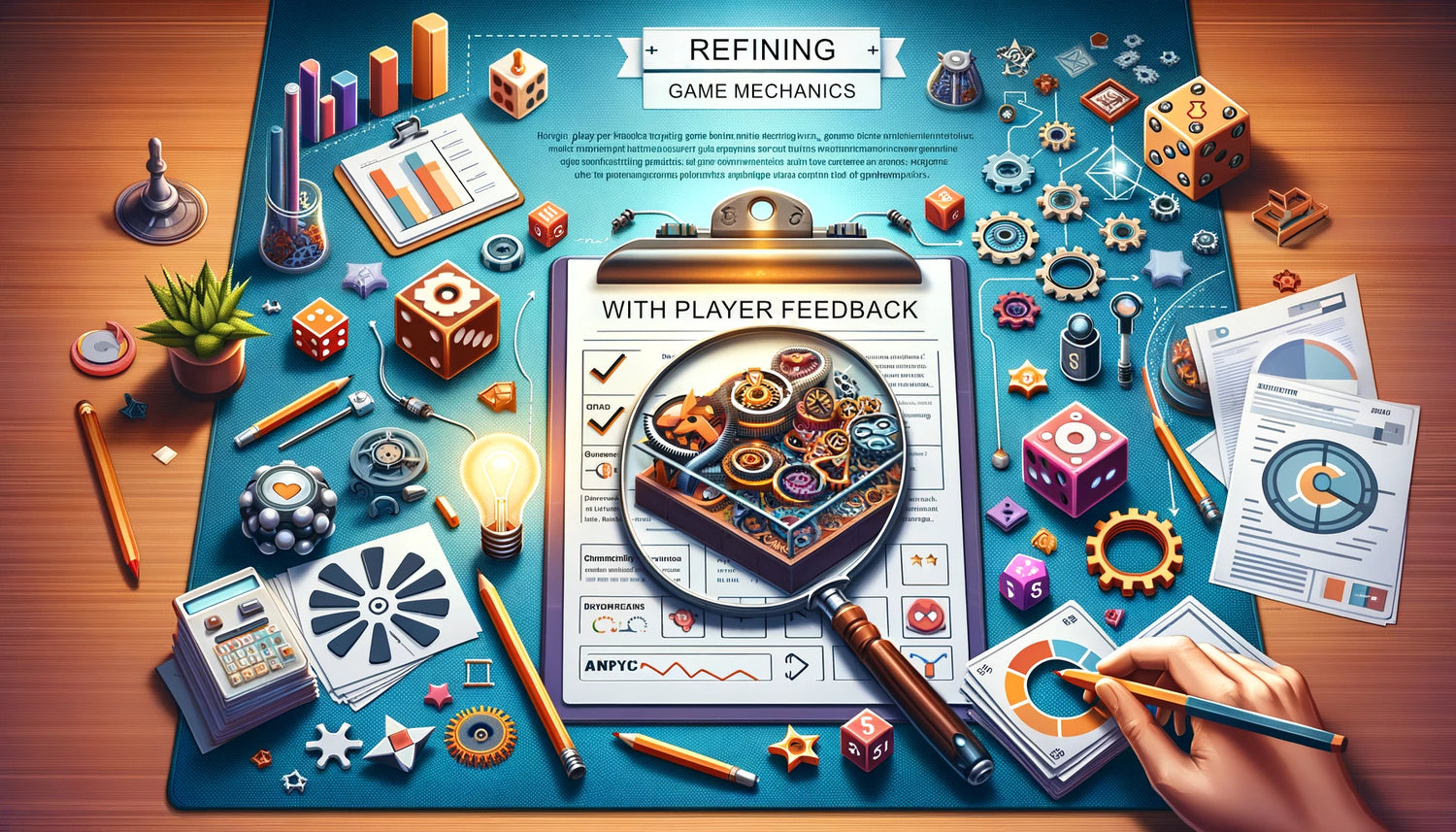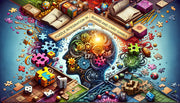Using Player Feedback to Refine Game Mechanics

Introduction
In the development of board and card games, player feedback is an invaluable resource for refining game mechanics. It provides insights into how players interact with the game, highlighting areas that are enjoyable as well as those that might need improvement. This blog post will delve into the process of using player feedback to refine game mechanics, ensuring that the final product is well-tuned, engaging, and enjoyable for its audience.
Understanding the Value of Player Feedback
Player feedback offers direct input from the end-users of your game - the players. It can reveal aspects of your game that are working well, mechanics that might be confusing or unbalanced, and even suggest potential enhancements you might not have considered.
1. Gathering Effective Feedback
Diverse Player Base: Collect feedback from a wide range of players, including casual gamers, enthusiasts, and seasoned players.
Structured Feedback Methods: Use surveys, feedback forms, or structured interviews to gather comprehensive feedback. Include questions about specific mechanics, overall gameplay, and player experience.
Observational Feedback: In addition to direct questions, observe players during playtesting. Look for non-verbal cues or behaviors that indicate enjoyment, frustration, or confusion.
2. Analyzing Feedback for Actionable Insights
Identifying Patterns: Look for common themes or repeated comments in feedback. If multiple players raise similar concerns or praises about a mechanic, it’s a strong indicator of where your attention is needed.
Objective Evaluation: While considering player feedback, maintain objectivity. Differentiate between subjective preferences and feedback that addresses core issues in game mechanics.
3. Balancing Mechanics Based on Feedback
Addressing Balance Issues: If feedback indicates that certain aspects of the game are overpowered or underutilized, adjust these mechanics for better balance.
Simplifying Complex Mechanics: If players consistently find certain mechanics too complex or confusing, consider simplifying them without diluting the game's strategic depth.
4. Enhancing Player Engagement and Experience
Refining Fun Elements: Identify what players enjoy most about your game and consider enhancing those aspects. This could involve expanding on popular mechanics or adding more content that players find engaging.
Improving Pacing and Flow: Use feedback to adjust the pacing and flow of the game. If players report that the game drags at certain points or feels rushed, tweak the mechanics to improve the tempo.
5. Iterative Design and Re-testing
Iterative Process: Game development is an iterative process. Implement changes based on feedback and then re-test the game.
Testing Changes: Specifically test the revised mechanics to ensure they address the issues raised in feedback and that they integrate well with the rest of the game.
6. Communicating Changes to Your Audience
Transparency with Players: Be transparent about the changes you’re making in response to feedback. This can build trust and show players that their input is valued and taken seriously.
Managing Expectations: Communicate why changes were made and how they improve the game. This can help manage player expectations and acceptance of the changes.
7. Finalizing Game Mechanics
Consolidation of Feedback and Design: Once you’ve gathered extensive feedback and tested your revisions, consolidate these into the final version of your game mechanics.
Documentation: Update your rulebook and other documentation to reflect any changes in the mechanics.
8. The Role of Feedback in Long-Term Game Success
Continuous Improvement: Even after the game is published, continue to collect and consider feedback for future editions or expansions.
Building a Community: Engaging with your player base and responding to feedback can help build a loyal community around your game.
9. Utilizing Negative Feedback Constructively
Learning from Criticism: Use negative feedback as a learning opportunity. Understand the underlying issues and use this information to improve your game.
Balancing Different Opinions: Recognize that you can’t please everyone. Focus on feedback that aligns with your game's vision and goals.
10. Keeping Feedback in Perspective
Aligning Feedback with Vision: Ensure that the feedback you incorporate aligns with your overall vision for the game. Don’t let feedback steer the game away from its core identity.
Weighting Feedback Appropriately: Give more weight to feedback that is consistent across multiple players and less to outliers that don’t align with the general consensus.
Using player feedback to refine game mechanics is a crucial part of the game development process. It helps in creating a game that not only aligns with your vision but also resonates with your target audience. By thoughtfully analyzing and implementing player feedback, you can enhance your game’s mechanics, making them more enjoyable, balanced, and engaging. Remember, the goal is to create a gaming experience that players will love, and who better to guide you in that quest than the players themselves?








